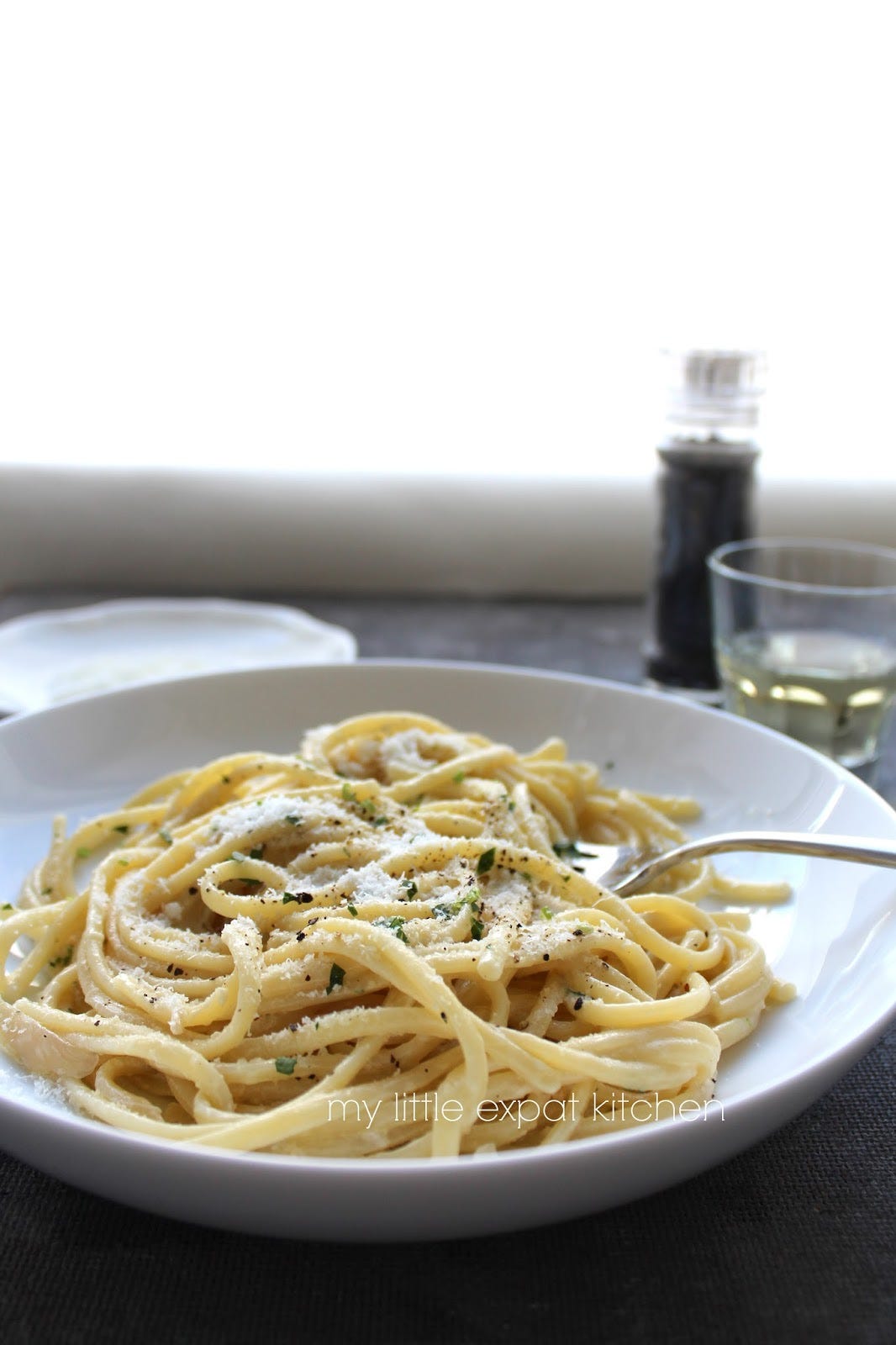Crème fraîche linguine with white wine and shallots
Silky, creamy sauce is the best type of pasta sauce
Published originally on my blog on 24 April 2016
Some images of food speak to our primal instincts. The image of bread is invariably one of them. A crusty, plump loaf is always tempting even when you're full. For meat eaters, a juicy steak can never be resisted. A dish of glistening, rich pasta is yet another one; it can evoke so many feelings and desires that it’s impossible not to crave it or want to have it right at the moment you see it.
This explains why so many people liked the photo of my panful of pasta that I posted a couple of weeks ago on instagram. So many people got excited by that image and were asking for the recipe even though I had not written one thing in the caption about the ingredients it contained. It wasn’t hard of course to figure out approximately what went in it, but isn’t it remarkable how people can react to an image of pasta?
So, I made the dish again and I’m posting the recipe so that each and every one of you out there who felt the need to jump into your screens when you saw my photo, can now go make it yourselves and enjoy it.
It is a linguine pasta with white wine and crème fraîche, some sautéed shallots in olive oil, lots and lots of Pecorino cheese, black pepper and a wisp of parsley to freshen things up.
It is light, tangy and sweet at the same time, with acidity from the wine and creaminess from the crème fraîche that when it mingles with the pasta water (which is key to this dish) it creates a creamy, silky sauce.









